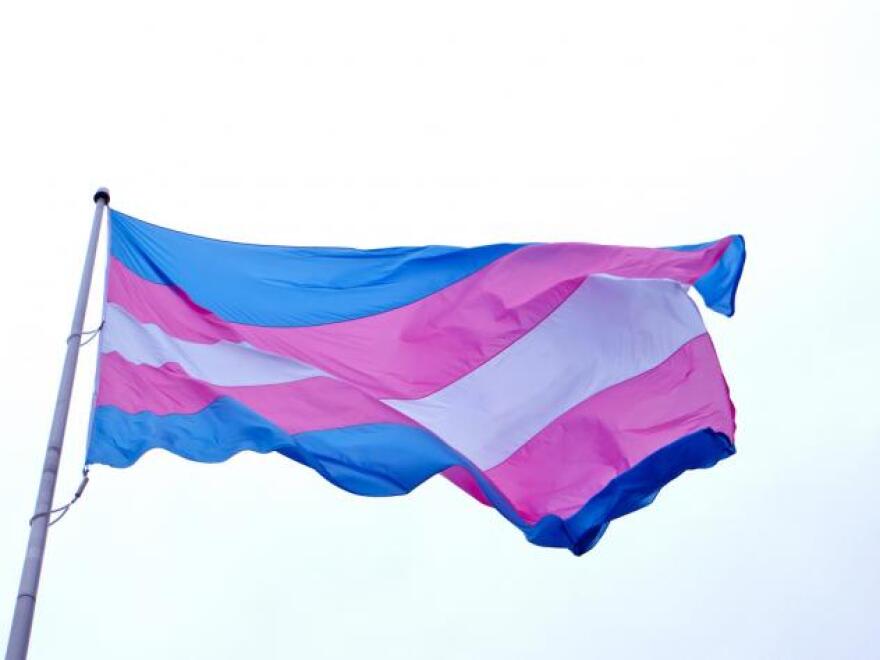Parents make many decisions for their children when they are young - how to style their hair, what clothes they wear, what toys they play with.
At a certain point, however, cognitive development allows children to start to make their own decisions on what they like and what they don't like.
Children who are transgender may often choose differently than how they have been presented since birth. They may have been medically assigned to one or the other in the gender binary - male or female - but their awareness of themselves does not match that particular label.
And that's when the parents of transgender children have another decision to make - specifically whether to listen to their child and help them express who they are.
They also have to decide how and when to do so. That decision can come as early as when a child is 4 years old, as was the case for Michele Cusac, whose story of her and her transgender son was featured in the July edition of Desert Companion.
"He was very, very upset if you tried to dress him as female," Cusac said. "It was to the point where he was really anxiety ridden and angry all the time."
So Cusac began to allow her son, who was assigned female at birth, to cut his hair, wear masculine clothes and choose a more masculine name.
"The day we allowed him to cut his hair, it was night and day. There was no way it was not the right thing to do judging by his attitute adjustment once this happened," Cusac said.
Cusac's son exhibited the tell-tale signs that his expression is more than just a passing phase: persistance, consistence and insistence.
"I cannot influence my child to pick up his socks, much less to change his gender," Cusac noted.
Nonetheless, reaction from family members and school administrators has been less than completely supportive.
Upon entering elementary school, Cusac's son was made to use the nurse's bathroom, or use women's restroom where older students would ridicule the 7-year-old.
"He would be forced to use the women's bathroom and have sixth grade girls make fun of him, so he just wouldn't go," Cusac said. "So I would pick this kid up and he would be dying to go to the bathroom."
During the 2015 Legislative Session, AB 375 sought to address the issue - by forcing transgender students to use the bathroom of their biologically assigned gender, or use a seperate facility altogether. The bill did not pass, and was highly controversial.
According to Jane Heenan, a family therapist and director of Gender Justice Nevada, the Clark County School District has yet to make a unifying policy regarding bathroom use.
"They don't have a policy," Heenan explained, "So the issue falls into the hands of each individual principal. I have no doubt that the schools are in violation of the law when they are requiring people to enter separate but equal accomodations."
Parent Laura Hernandez and her daughter brought the issue to the Clark County School District board in April, pleading with the board to ultimately have a more accepting, unifying policy.
Allowing her daughter to start at a new school when she entered middle school helped with problems she had with acceptance at her previous school. Nonetheless, Hernandez said she still worries about the negative encounters her daughter will have.
"My fears have been more toward the adults she would come into contact with," Hernandez said. "Kids tend to be more accepting and open minded than adults."
Nevada wasn't alone when considering bathroom legislation that would effect the transgender population. As many as 13 other states considered similar legislation.
According to Heenan, being able to use the same facilities as their peers is paramount to a transgender student's well being.
"It's a way to affirm for myself that I'm real, that people are going to respect me and that I matter,"
Heenan said. "In terms of developmental process, that's essential."
Some disparaging statistics exist when it comes to the well being of transgender youth. According to the National Center for Transgender Equality, in a national survey of those who expressed a transgender identity or gender non-conformity while in grandes K-12, 78 percent reported harrassment, 35 percent reported physical assault and 12 percent reported sexual violence. Of the same study, almost half the respondents said they had at least thought about committing suicide, and 15 percent experienced harrassment so severe it led to leaving school.
Despite such alarming statistics, support organizations such as Gender Justice Nevada seek to educate the public about transgender and gender non-binary expressions to spread the acceptance of the youth and community at large.
"I always tell people to go home and tell someone they met a transgender person today," Heenan said.
Jane Heenan, director, Gender Justice Nevada; Michele Cusac, parent; Laura Hernandez, parent


